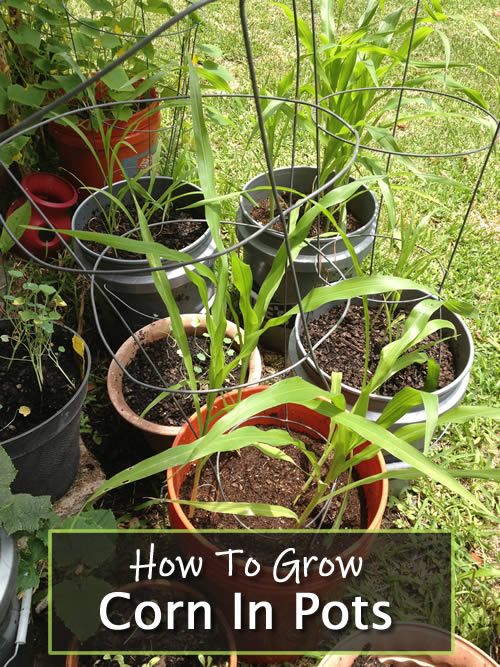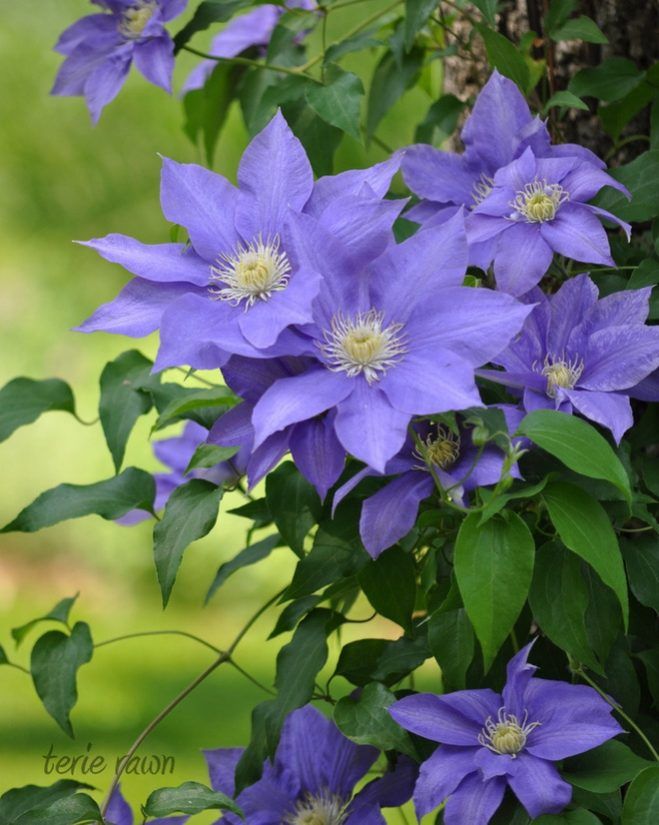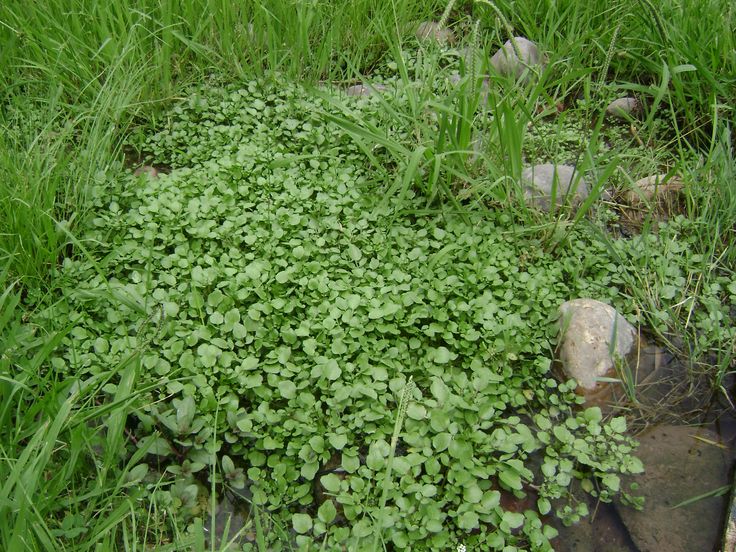Wisteria vines in winter
How to Protect Wisteria From Wind, Cold, Frost, and Snow
Wisteria is such a quick-growing plant that it seems to thrive without much effort or maintenance from the gardener. But, even this super hardy plant needs a bit of attention now and then. Despite their vigor, new plants may need extra protection for winter, especially if you live somewhere where snow and frost are common.
It’s essential to keep your Wisteria healthy and hydrated during the fall to protect the plant from wind, cold, frost, and snow. Mulch will help insulate the roots, while other covers may be needed to protect the foliage and blossom buds. Severe cold damage can prevent a Wisteria from blooming.
So what should you expect from your Wisteria this year? And how can you protect it from frost, wind and snow? Read on to learn what to do if your vine suffers injury this winter plus steps to take to prevent the damage in the first place.
What to Expect from Your Wisteria This Winter
Wisterias are deciduous climbing vines whose leaves start yellowing in the fall before dropping off in the winter. The plant (like many others) goes dormant during the winter. But unlike other plants, Wisterias should be pruned aggressively during the winter while you can see the entire plant easier without all the tangled foliage in the way.
Wisteria typically looks like a dead vine in the winter, as it loses all of its foliage and is only left with brown wood during the dormant months. Even though this is the time to prune the vine, you shouldn’t go overboard. Remember, the vine isn’t dead – it’s dormant. Wisteria does not die during the winter. Only remove growth to control the size and shape and help encourage growth in the areas you want.
Pruning during the winter also allows your Wisteria to focus its energy on forming the buds that will produce next year’s show-stopping blooms. Also, it will keep your Wisteria under control so that it doesn’t cause damage to the trellis or structure that it’s climbing on.
After the flowering season, you can also expect to see a brown, bean-like pod on your Wisteria vine that may hang around until the start of winter.
Is Wisteria Cold Hardy?
Several types of Wisteria grow throughout the United States, and each is slightly different in its cold hardiness. Some varieties are better suited for colder climates than others. However, all Wisteria thrives in full sun and typically does better in milder temperatures. Most wisteria vines are not cold hardy below USDA zones four or five.
Japanese Wisteria is hardy to zone four, while Chinese and American Wisteria are cold hardy to zone five. The most cold-hardy varieties are Kentucky Wisteria and “Summer Cascade,” which are hardy to zone three, but these varieties are far less common than the popular Japanese and Chinese types. The most cold-hardy variety is a cultivar of Kentucky Wisteria known as “Blue Moon,” which is cold hardy to -40°F.
A few types of Wisteria grow naturally in the wild in the U.S. American Wisteria (Wisteria frutescens) grows native in USDA zones five to nine. It can thrive in various environments and is found in southeast Florida all the way up through New York and Michigan.
Kentucky wisteria (Wisteria macrostachya), which grows well in USDA zones four to nine, is also native to the U.S. and grows from the country’s southeastern region up through the northern states.
How to Protect Wisteria from Cold Temperatures
Most of the time, Wisteria will not need much assistance to survive normal winter conditions. As long as they’re growing between the USDA hardiness zones (typically between 4-9), they should be able to handle some freezing temperatures on their own. However, newly planted Wisteria may need additional protection, especially during the first two years.
- Keep Your Plant Watered: When preparing your Wisteria for winter and protecting it from cold temperatures, the best defense is a good offense. It’s a good idea to water your Wisteria vine thoroughly and regularly during the fall and winter months. Keep the soil moist, but ensure good drainage so that it’s not soaked.
Keeping your plants hydrated allows them to transport vital nutrients through the root system so they’ll be available to support the plant throughout the winter.
 It’s also a good idea to water your Wisteria thoroughly ahead of upcoming freezing temperatures. This will allow any foliage a better chance of surviving frost.
It’s also a good idea to water your Wisteria thoroughly ahead of upcoming freezing temperatures. This will allow any foliage a better chance of surviving frost. - Mulch Around the Base: Another easy step to protect your Wisteria from cold temperatures is to add a thick layer of organic mulch around the base of the plant. This is beneficial to all plants in your garden, so the easiest thing to do is spread mulch everywhere to provide insulation to roots and help keep moisture in the soil.
The best method is to spread a 4-inch layer around the vine’s base, making sure you go out at least 2 feet around the base to protect the entire root ball. You can use anything from shredded bark mulch to leaves or grass clippings for this purpose.
- Add Nutrients: Some gardeners like to prepare for the dormant period by adding phosphorus to the soil during the fall. Many people believe that it helps improve Wisteria’s flowering come springtime.
 Bone meal and rock phosphate can be added to the soil ahead of the winter months to help add extra nutrients to the soil.
Bone meal and rock phosphate can be added to the soil ahead of the winter months to help add extra nutrients to the soil.
How to Protect Wisteria from Frost and Snow
Wisteria is typically hardy against frost, but bloom buds and emerging flowers can be susceptible to frost damage. This can be a problem during late spring frosts once the vine has come out of dormancy and is getting ready to bloom.
Wisteria is a cold-hardy plant that can withstand frost and snow, with some cultivars surviving temperatures well below zero. However, after the winter months, Wisteria comes out of its dormant period and begins to bud and produce new leaves. If a sudden cold snap drops temperatures too low, it can be very damaging to the plant.
For this reason, it’s a good idea to plant your Wisteria in an area that has some shelter from the wind, such as a brick or block wall that absorbs heat during the day and releases heat at night. Planting Wisteria in an area with western or southern exposure helps to maximize sunlight hours.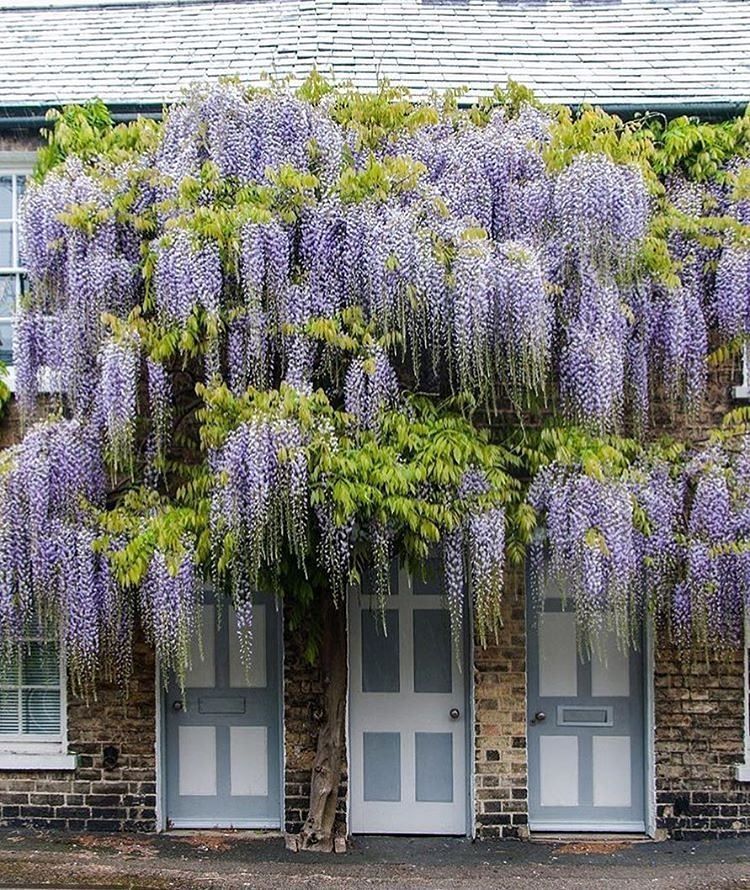
Frost and cold damage are more likely when your Wisteria is within its first year or two of growth. When the plant is young, it may be too tender to survive these freezing temperatures. Even on mature plants, new growth can be susceptible to frost damage.
This can occur if you prune your Wisteria too late in the season. Pruning can stimulate new growth at the wrong time as new, tender vines and tendrils may sprout and not have enough time to harden off before temperatures drop below freezing. You can avoid this problem by not pruning Wisteria plants anytime in late summer or fall.
To protect your Wisteria from late spring frosts or cold winds, use plastic tubing, bubble wrap, or cloth such as burlap to protect your vine. Plastic tubing is a good option because you can fit it around the main vine of the plant without having to try to cover a massive trellis.
Another option is to use stakes around the vine to hold up a drop cloth or other fabric material which you can drape over the entire plant. Just remember to remove the cloth once the temperature warms up during the day. Covering your plant before a frost will help preserve its buds and avoid stunting growth or damaging the roots and vine.
Just remember to remove the cloth once the temperature warms up during the day. Covering your plant before a frost will help preserve its buds and avoid stunting growth or damaging the roots and vine.
Caring for Wisteria in Winter
You should continue to care for your Wisteria during the winter months as you do throughout the year. Ensure that it’s getting enough water and sunlight, even if the leaves are gone and it’s just a bare vine. Keeping the soil moist is important, and adding a thick layer of organic mulch around the vine’s base can help the soil retain moisture and insulate the roots from cold.
Do not prune your Wisteria during frosts or freezes. However, during the winter, you should prune the vine overall for shape, to control its size, and to clean up tangled vines. Make sure that you only cut away growth from the current season, if possible, and leave the more mature growth. Cutting growth from the previous year may cause you to lose blooms come spring.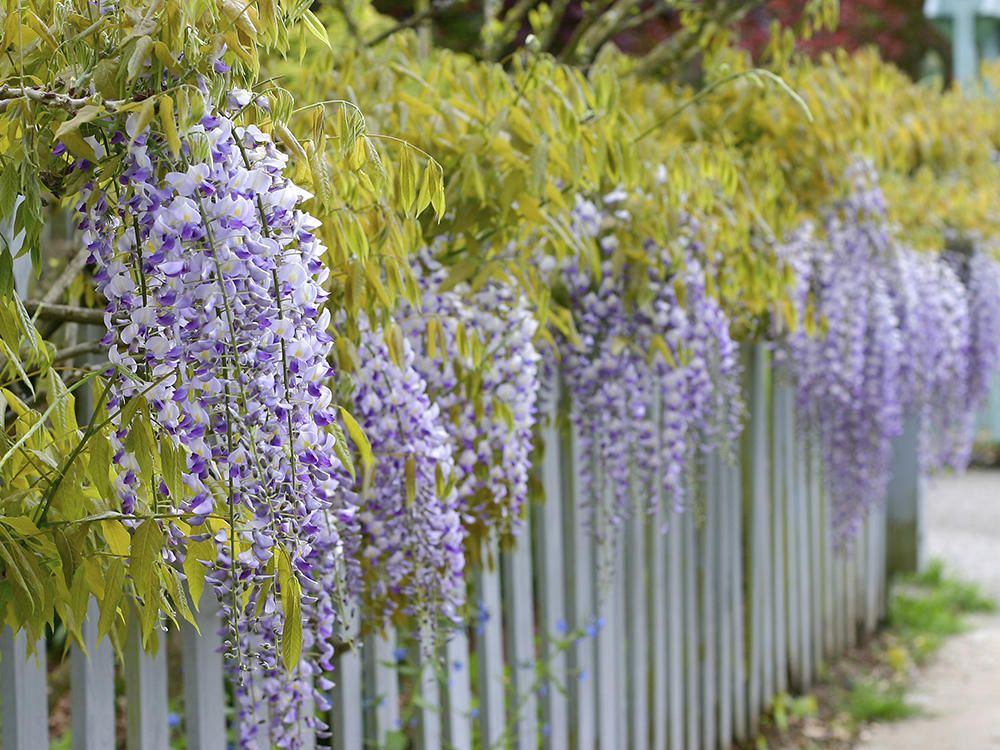
It’s a good idea to prune lateral shoots during the winter and remove all but just a few buds. As I mentioned, don’t cut from the main vine, but do trim back stems and tendrils that shoot out in places where you don’t want new growth to climb. Also, cosmetic pruning is acceptable during the winter if you’re looking to shape the vine in a certain way or want to keep it neat and controlled.
Remember, excessively cold temperatures can affect your Wisteria’s blooms for the upcoming year. Protecting your Wisteria from the extreme cold will help prevent any disappointment come spring and summer when you’re waiting for the whimsical explosion of sweet-smelling blooms.
Container Gardening: How to Care for Wisteria Planted in a Pot This Winter
Growing Wisteria in a container can be a challenge due to its aggressive growth patterns. However, with the right attention, it can be done. Growing Wisteria as a potted plant helps keep the vine under control and allows you to more easily shelter it from the elements.
For best results, place your Wisteria and container in an area that will receive full sun throughout the day. You’ll also need to make sure it’s getting watered thoroughly and that the soil is staying moist but also draining properly. For more information on the pros and cons of growing a Wisteria in a container and specific care instructions for potted plants, read this article.
It will be harder for Wisteria in small pots to survive over winter, especially in areas where the temperature drops below freezing. If your vines are in small pots, you should try to bring them inside, in a garage, or cover them to protect them from frost and wind damage. Some people put their small wisteria pots into larger pots of soil to help insulate the roots from the cold. Piling mulch around the sides of the planter can also help to insulate the pot.
Another option is to dig a hole for the pot and sink the Wisteria and container into the soil for added protection. Taking the pot in and out of a home or structure may prevent it from going dormant like it’s supposed to, which isn’t good for the plant’s overall health.
What To Do When Your Wisteria is Damaged by Cold or Frost
If your Wisteria becomes injured by frost or freezing temperatures, damaged sections may turn black in color, especially on shoots of growth and on the ends of vines. It’s a good idea to cut back cold damaged vines to encourage new growth in those areas.
To prune frost damage, trim at least one leaf node past the damaged area. If flower buds are damaged, they will typically turn black like damaged vines and fall from the plant on their own. You don’t need to cut these off, though you can pinch or knock them off if you so choose.
Damage from a freeze can cause your Wisteria not to bloom, even if you have a mature plant that has bloomed for many years, so it’s important to be vigilant about protecting your plant from late spring frosts. If you find that your Wisteria is not blooming, it may be affected by winter dieback. Since Wisteria blooms on old wood, it’s possible that the buds are dying during the winter.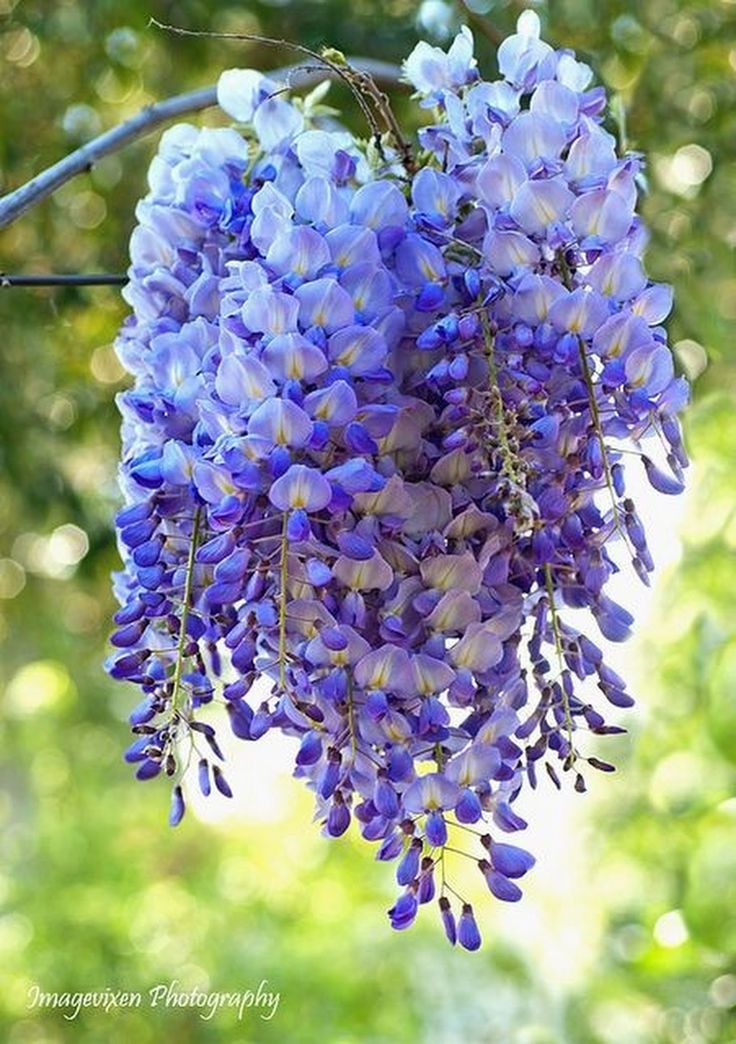
If you believe that your Wisteria is suffering from winter dieback, the best thing to do is wrap the vine with plastic tubing or burlap to protect it from freezing. However, this is typically only a problem with extremely cold temperatures.
If you prune your Wisteria to cut back frost damage, make sure that you wait until spring to do so. The last thing you want to do is trim the vine, encourage new growth, then have another late frost. This will only cause more damage, and you will have to do the same work over again.
Can Wisteria Survive a Freeze?
Wisteria will typically survive a freeze, though flowers, buds, and leaves may not. If you’re hit with a heavy frost or freeze, especially if it’s later than usual or following a warm period, your plant may come out of dormancy and start generating new growth. If this growth is frozen, it will be lost for some time.
The plant should be fine as long as the main vines aren’t frozen and don’t turn black. You can always check for life by gently scraping the bark with your fingernail. If you see any green underneath, the plant is still alive. If it’s brown all the way through, that area of the vine is not alive and won’t be able to be revived.
You can always check for life by gently scraping the bark with your fingernail. If you see any green underneath, the plant is still alive. If it’s brown all the way through, that area of the vine is not alive and won’t be able to be revived.
After a freeze, it may take weeks, months, or even until the following growing season for your vine to produce buds or blooms again. Sometimes Wisteria is finicky with flowering, so any added stress on the plant can impact the process.
If your Wisteria looks brown and dry after a freeze, you should wait a few weeks before you take the pruning shears to it. Sometimes, the plants will come back on their own without intervention. Cutting away growth when you don’t need to can result in cutting away your buds for this year. While this wouldn’t harm the plant long-term, no one wants to lose their blooms if they don’t have to.
Putting it All Together
In general, Wisteria is a cold-hardy plant that doesn’t need much help to survive during the winter months. The biggest concern with Wisteria during winter is pruning since it’s the best time to cut back growth and clean up the overall look of the plant. When pruning during the winter, only cut back growth from the current year. It’s also best to leave the main vines intact and only trim away the offshoots.
The biggest concern with Wisteria during winter is pruning since it’s the best time to cut back growth and clean up the overall look of the plant. When pruning during the winter, only cut back growth from the current year. It’s also best to leave the main vines intact and only trim away the offshoots.
In seriously cold areas or with late spring frosts, you may need to protect your Wisteria using a cloth or plastic tubing. Frost damage can cause vines and buds to turn black and die off and severely impact your flowers, so try to make sure that you prepare your Wisteria accordingly to stay healthy and strong all winter.
Deciduous or Evergreen? What To Expect from Wisteria in Each Season
When one of your plants starts turning yellow or dropping its leaves, it’s natural to worry that something might be going wrong. On the other hand, your plant might simply be deciduous and losing its leaves in preparation for winter. So what is the case with Wisteria? Is it evergreen or deciduous?
There are several species of Wisteria, including Chinese, Japanese, American, and Kentucky Wisteria, and all of them are deciduous and lose their leaves in winter. A closely related plant known as Evergreen Wisteria or Summer Wisteria is evergreen in warm climates. But despite its name, Evergreen Wisteria is not technically Wisteria and is not always evergreen.
A closely related plant known as Evergreen Wisteria or Summer Wisteria is evergreen in warm climates. But despite its name, Evergreen Wisteria is not technically Wisteria and is not always evergreen.
Since one is deciduous and the other is (sometimes) evergreen, true Wisteria and Evergreen Wisteria behave differently in fall and winter. This article will go over what it means to be evergreen vs. deciduous, which types of Wisteria are deciduous, and when to prune deciduous Wisteria and Evergreen Wisteria.
The Difference between Evergreen and Deciduous Plants
In the plant world, Deciduous actually means “to fall off,” so these types of plants drop their leaves in the fall and grow new ones in spring. Some put on beautiful displays of fall color before they lose their leaves.
Evergreens are “ever green,” keeping their leaves all winter and giving us that pop of green in the winter landscape. Including evergreen and deciduous plants in the garden adds interest at different times of the year.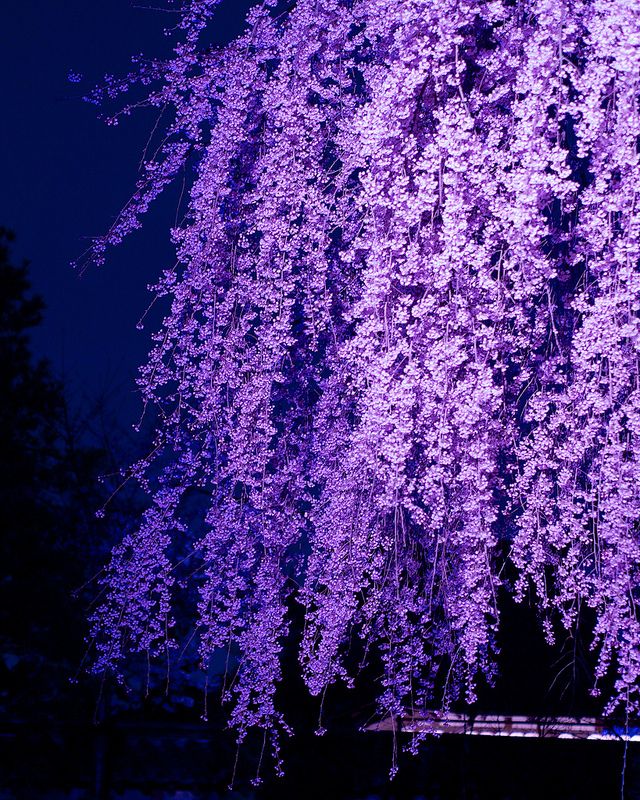
Is Wisteria Evergreen or Deciduous?
True Wisteria is deciduous, shedding its leaves for the winter. However, it has a close cousin known as Evergreen Wisteria, which is evergreen in some climates and deciduous in others.
The true Wisteria species commonly grown in gardens are:
- Chinese Wisteria (Wisteria sinensis)
- Japanese Wisteria (Wisteria floribunda)
- American Wisteria (Wisteria frutescens)
- Kentucky Wisteria (Wisteria macrostachya)
All of these are in the genus Wisteria, and all are deciduous.
Evergreen Wisteria – also called Summer Wisteria – is not part of the Wisteria genus but is closely related. Like Wisteria, it is part of the Millettieae tribe in the Fabaceae (pea) family. Botanists disagree about the proper name for Evergreen Wisteria, but it is usually called Millettia reticulata or Callerya reticulata. It is deciduous in most temperate climates, but in warmer regions (zones 9 and 10 in the US), it is evergreen.
Will Wisteria Die Back in Winter?
If your Wisteria starts dropping its leaves in the fall, don’t worry. Most Wisteria is deciduous. It doesn’t stay green during winter, but the leaves will grow back in spring.
Some Wisteria varieties put on a show of fall color before losing their leaves, with the leaves turning yellow or gold. While yellowing and dropping leaves can be signs of disease and other problems, if it’s happening in the fall, there’s probably nothing to worry about unless you’re also noticing other symptoms such as an insect infestation.
While all true Wisteria is deciduous, Evergreen Wisteria (Millettia reticulata) is more complicated. If you have hot summers and short winters that don’t get much below freezing, your Evergreen Wisteria will probably keep its leaves year-round. In the US, this is zone 9b and up, including the southern half of Florida and Texas as well as parts of California and Arizona.
In more temperate areas, Evergreen Wisteria is deciduous just like regular Wisteria, and you can expect it to die off for the winter and leaf out again in the spring.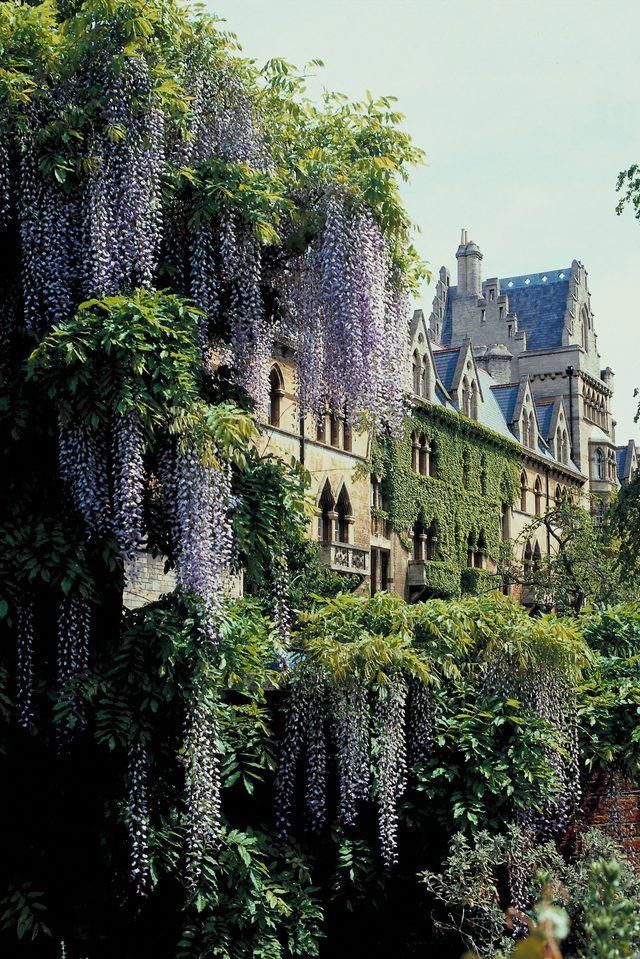 However, even deciduous behavior can’t protect Evergreen Wisteria from long, freezing winters, so if your climate is colder than USDA zone 8, you probably won’t be able to grow it.
However, even deciduous behavior can’t protect Evergreen Wisteria from long, freezing winters, so if your climate is colder than USDA zone 8, you probably won’t be able to grow it.
When to Prune Deciduous Wisteria
The best times to prune true Wisterias are summer and late fall. Summer pruning is done after the Wisteria has finished blooming, and fall pruning should be done after the Wisteria has dropped its leaves, signaling that the plant has gone dormant for the winter. If you have mild winters, you can prune in winter instead of fall.
While Wisteria does not need to be pruned, it is a vigorous grower, so you may want to prune to keep it from outgrowing the space where it’s planted. You can prune Wisteria up to two times a year.
Pruning Wisteria serves several purposes. It keeps Wisteria to a manageable size, encourages blooming, helps to shape and train the Wisteria, and can reinvigorate older plants.
In summer, after the blooms have faded, trim the new shoots back to about six inches, leaving a few buds and a few leaves on the new growth.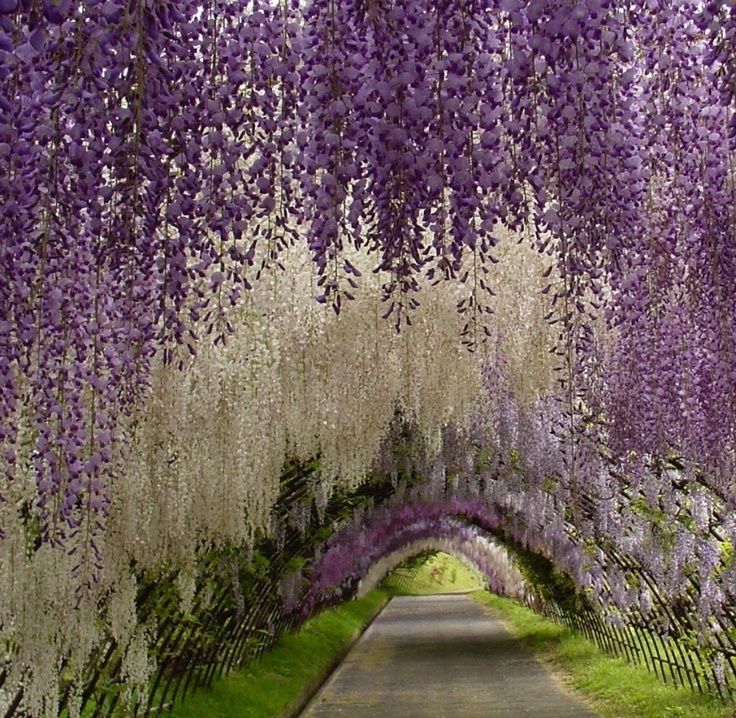 Wisteria flowers on the previous year’s growth, so be sure not to cut it all off unless you really need to.
Wisteria flowers on the previous year’s growth, so be sure not to cut it all off unless you really need to.
You can repeat the process in late fall, removing any excess growth from the summer but leaving a few buds. This type of pruning encourages blooming and keeps Wisteria from getting unmanageably large.
If you’re looking to prune in order to shape and train your Wisteria, fall is the easiest time because, without leaves, you’ll be able to see the branch structure more easily. Cut back unwanted branches and train branches where you want them to grow. You should also remove any dead branches, although this can be done at any time of year.
You can also prune the tips off of new growth to encourage the Wisteria to branch. This can be desirable for shaping, especially if you’re training the Wisteria over a pergola or up a wall.
Annual or twice-annual pruning can keep Wisteria from getting overgrown, but if your Wisteria has gotten out of control and needs to be cut back a lot, do a hard pruning in the fall. In this case, be sure to cut the Wisteria back to a smaller size than you actually want it to be. Wisteria can grow several feet a year under the right conditions, so allow for new growth to reach the size you’re going for. Just be aware that if you prune the Wisteria back a lot, it may take a couple of years to flower again.
In this case, be sure to cut the Wisteria back to a smaller size than you actually want it to be. Wisteria can grow several feet a year under the right conditions, so allow for new growth to reach the size you’re going for. Just be aware that if you prune the Wisteria back a lot, it may take a couple of years to flower again.
When to Prune Evergreen Wisteria
Like true Wisteria, Evergreen Wisteria doesn’t need to be pruned. But since it is a twining vine often used to cover arches, fences, trellises, etc., pruning it can help create the desired shape. It is also fast-growing, so you may want to prune it to keep it from growing too large.
The best time to prune Evergreen Wisteria is early spring, before the growing season. It is also acceptable to prune it later in the summer after blooming is done. Ideally, you should prune your Evergreen Wisteria once a year, unless you don’t mind it growing as large as it can and sprawling a bit.
Annual pruning to control growth can keep your Evergreen Wisteria to the size you want it.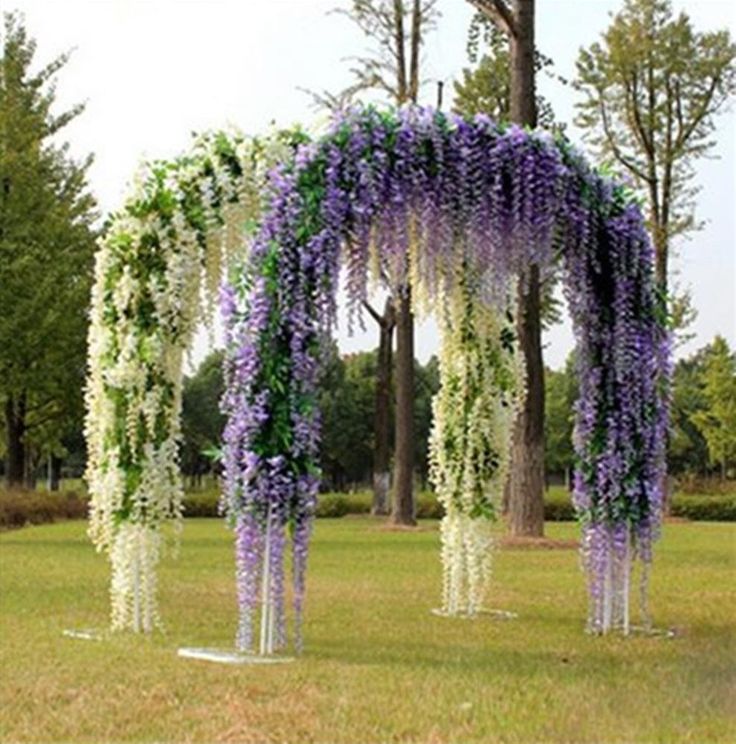 Pruning shoots near the bottom of the plant can also encourage branching there, giving you a fuller coverage of whatever the plant is climbing on. Evergreen Wisteria responds well to pruning, so don’t be afraid to cut it back if it’s getting out of control and to cut back shoots that are growing in the wrong direction.
Pruning shoots near the bottom of the plant can also encourage branching there, giving you a fuller coverage of whatever the plant is climbing on. Evergreen Wisteria responds well to pruning, so don’t be afraid to cut it back if it’s getting out of control and to cut back shoots that are growing in the wrong direction.
Putting It All Together
As temperatures drop in the fall, you can expect Wisteria to lose its leaves. The plant will stay dormant for the winter and grow new leaves in the spring. The exception is Evergreen Wisteria, which will stay green all year if you live in a warm climate.
Pruning is also different for true Wisteria, which is deciduous, and Evergreen Wisteria (Millettia reticulata). Both benefit from pruning, but deciduous Wisteria is usually pruned twice a year, in summer and late fall, while Evergreen Wisteria is generally pruned in early spring.
Wisteria is hardy in the right climate, so chances are if yours is dropping leaves, or if you need to cut it back, it’s going to be ok.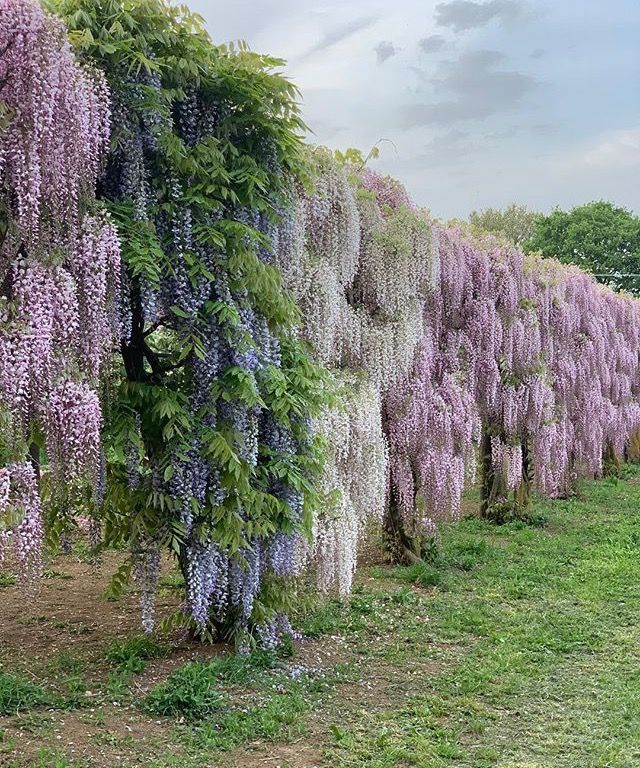 As long as you’re not noticing leaf drop in spring or summer, there should be nothing to worry about.
As long as you’re not noticing leaf drop in spring or summer, there should be nothing to worry about.
Liana wisteria - growing conditions in the garden, wintering wisteria (wisteria)
wisteria plant - description
If one day you see how wisteria (lat. Wisteria) blooms - this is an amazing sight, of course, you will remember for many years. This deciduous liana, whose homeland is China and Japan, is also known as "flower rain" or "waterfall of flowers". And it justifies its name one hundred percent. Wisteria inflorescences are collected in large brushes (sometimes their length reaches one and a half meters), they can be painted in white, purple, blue and pale lilac. They cover the plant itself very tightly, so much so that sometimes they completely hide the leaves and stems of the wisteria plant in their fragrant thickets.
Growing wisteria in the garden
Wisteria (another name for wisteria) is used for vertical gardening. Its profusely flowering shoots are easy to hide and give a decorative look to a boring nondescript wall, camouflage poles and fences. Her lush brushes will wonderfully decorate a gazebo or an open veranda. But it should be remembered that wisteria is a liana, and it definitely needs a strong support so that its shoots climb up.
Its profusely flowering shoots are easy to hide and give a decorative look to a boring nondescript wall, camouflage poles and fences. Her lush brushes will wonderfully decorate a gazebo or an open veranda. But it should be remembered that wisteria is a liana, and it definitely needs a strong support so that its shoots climb up.
What is necessary for wisteria to feel good in the garden and please the owners with abundant flowering?
Conditions for Growing Wisteria
Firstly, the planting site must be well protected from drafts and strong winds.
Secondly, the soil for the wisteria seedling must be loose and fertile. The wisteria plant does not tolerate very wet soil, where it becomes light and loses its decorative effect. Therefore, in order to be safe, it is better to add humus, leafy soil and sand to the hole where the cutting will be planted.
Thirdly, the beautiful wisteria is very capricious about lighting.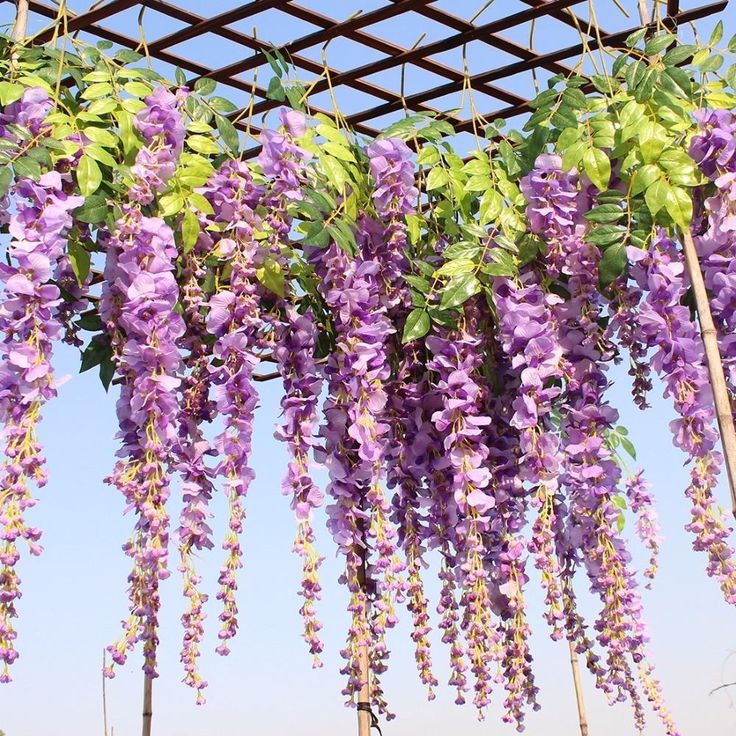 Where to plant wisteria? For abundant lush flowering, it is necessary that the plant be in the open sun for at least half a day. This rule is especially true during the period of bud formation and flowering.
Where to plant wisteria? For abundant lush flowering, it is necessary that the plant be in the open sun for at least half a day. This rule is especially true during the period of bud formation and flowering.
If this condition is ignored, then flowering will be weak, the flowers will become pale-colored, or wisteria will drop buds altogether. This can happen to her if the weather is too hot. Wisteria begins to bloom noticeably in the third or fifth year.
Wisteria in winter
As for the wintering of this exotic creeper in the middle lane, the most suitable species for this is "profusely flowering wisteria". It is able to withstand temperatures down to -25 ºC. Just remember that this only applies to adult plants. Young wisterias need shelter for the winter. This is done as follows: the shoots must be detached from the support and carefully, trying not to damage the delicate plant, lay on the ground. Sprinkle earth on top and then use spruce branches and covering material.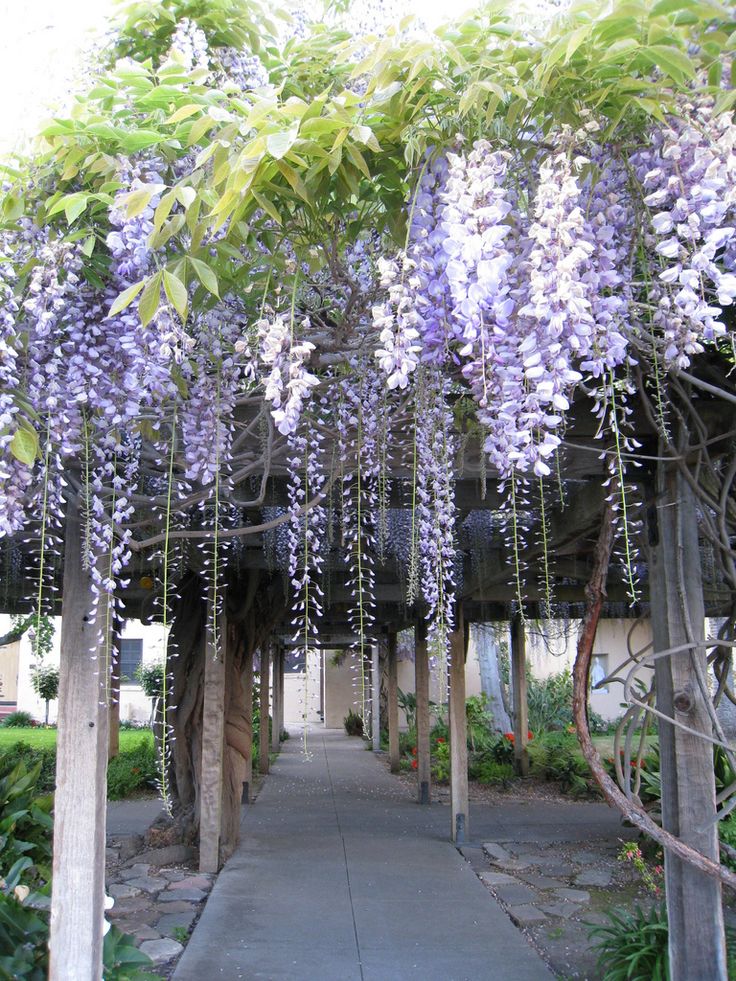
Wisteria flower in the garden
Wisteria pruning
Pruning plays an important role in the beautiful flowering of wisteria. Firstly, it is necessary to remove old and dead branches, and secondly, the shortening of young shoots stimulates more abundant flowering.
how to prune a plant in autumn and cover it for the winter?
Wisteria has another name - wisteria. This is a tree-like decorative liana belonging to the legume family. It grows mainly in the subtropics. There are 9 in totalplant species.
Wisteria is often used in landscape design to decorate pavilions, fences, arches. She has drooping branches and racemose inflorescences, reaching 20-30 cm, and the flowers are like moths. During flowering, foliage is almost invisible. Grows up to 18 m in height, reaches 8 m in volume.
Display content0063 Fertilizer and top dressing Life expectancy
Flowering Reproduction Pruning wisteria in autumn Preparing for winter
Diseases and pests Control measures and treatment Photo Useful video Garden care
Wisteria is quite thermophilic.
Feels comfortable in areas with a temperature of at least 18 degrees. Therefore, the garden requires careful care.
Planting
Wisteria can be planted in the garden in late spring, after the end of night frosts. Even if the variety is cold-resistant, the young tree should not be planted early.When planting wisteria in the garden, it is necessary to adhere to some rules:
- the place of growth must be sunny. Sufficient lighting is the key to abundant flowering,
- it should not be in a draft,
- the soil in this place should be nutritious, light and permeable.
A young seedling is planted in warm and well-moistened soil. During planting, you can apply fertilizer.
Acclimatization and getting used to a new place will take place within 1-3 months. There will be no growth during this time. Then, 1-2 years, increased growth of shoots will continue. In the third year of life, dense wood will begin to form on the trunk.
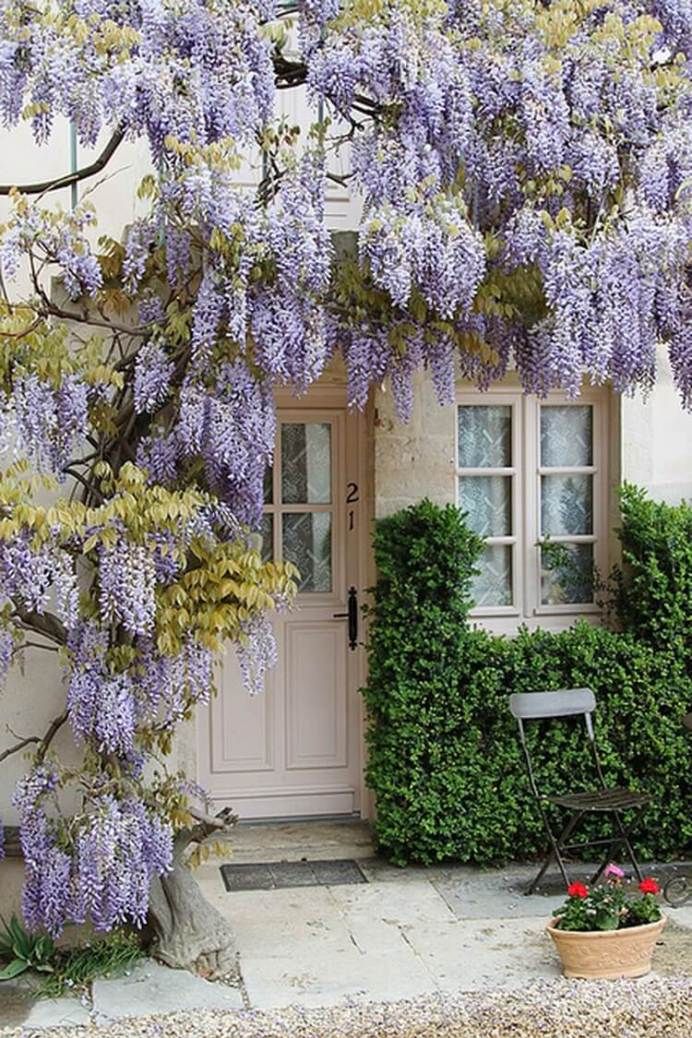
Watering
During the spring and summer months, water thoroughly. The soil under the wisteria should be slightly damp. You can not overmoisten the soil, this can cause rotting of the root system. With poor watering, it will not be possible to achieve lush flowering.
With the onset of autumn, watering is gradually reduced. At this time, growth stops and the vine prepares for wintering.
Humidity
Spraying is recommended during the summer months. This procedure will give freshness to the greens and have a positive effect on the condition as a whole.
Temperature conditions
Wisteria is thermophilic. feels most comfortable at a temperature of 20-25 degrees. But there are frost-resistant varieties that can withstand temperature decrease to -20. And yet, so that the plant does not die due to severe frosts, it must be removed from the supports and covered before the onset of spring.
Fertilizer and top dressing
In the spring and summer months, it is advisable to feed the wisteria with complex fertilizers.Organic fertilizers can be used to fertilize the soil. Once a year, in summer, it is recommended to water with chalky water. To do this, dilute 100 g of chalk in 10 liters of water.
Longevity
This creeper can be called durable.
With proper care, the life expectancy of wisteria will be from 50 to 150 years.
And about planting and caring for Chinese wisteria is described in this material.
Flowering
Wisteria blooms for the first time at the age of three. Japanese wisteria begins to bloom at the age of ten. It has racemose inflorescences hanging down. All flowers bloom simultaneously in April or early May.
Propagation
Tree creeper can be propagated by seeds. When choosing this particular method of reproduction, you need to know that the appearance of flowers in this case occurs very rarely.
The most reliable method of propagation is by layering. For this, a one-year-old shoot is selected in the spring, an incision is made and bends down to the ground.
The soil in which the layers are dug in should be clay-turf. The withdrawal is fixed before rooting. Layers are separated from the mother plant in spring.
Pruning wisteria in autumn
Wisteria grows very fast. Her shoots must be periodically cut and tied up. Creepers are guided and strengthened on a support.
By trimming the vine is given the desired shape. In early spring, before the leaves appear, shoots are cut to about 30 cm, in September another 10 cm . So you can achieve more lush flowering.
Dried twigs must be removed in autumn.
Winterization
In autumn, the plant must be winterized. First of all, dried flowers are removed and dry shoots are cut off.
How to cover the wisteria for the winter
After pruning, the branches of the vine are removed from the supports and stacked around the trunk. From above they are covered with agrofiber and film, you can additionally cover it with earth.Juveniles must be covered with particular care.
Pour soil or coniferous spruce branches around the trunk.
At what temperature and with what do they cover?
There are frost-resistant varieties of wisteria. But even they need shelter for the winter. It is necessary to prepare for wintering when lowering the thermometer mark to +5. By this time, you need to lower the vines and pour earth around the trunk.
When the temperature approaches 0., the plant can already be covered with agrofibre and film.
Diseases and pests
Rarely affected by pests or diseases. The most common are:
- chlorosis - a disease in which the leaves turn yellow and fall off. The reason is unsuitable soil, for example, with a high content of limestone.
- powdery mildew attacks leaves and shoots. It is affected by the disease at high temperature and high humidity.
- kidney blast is very dangerous. Black mold appears on the shoots, flowering stops.

- green aphid appears on inflorescences and then on leaves. The first sign of the appearance of a pest is sticky dew drops.
- Clover mite is quite dangerous. Foliage takes on a bronze color, then withers and falls off.
Control measures and treatment
To get rid of chlorosis, fertilization with iron salts is required. Pour a layer of sand around the trunk.
To prevent powdery mildew and bud blast, shoots are thinned out. It is also worth limiting fertilizing with nitrogenous fertilizers. Affected branches must be cut and burned, and the entire plant is treated with fungicides.
Pests can only be controlled by treating the whole plant with insecticides. The treatment procedure should be repeated after 5-7 days.
Wisteria garden will be a worthy decoration of your garden. With proper care, she will turn the site into a real fairy tale and will be able to please more than one generation.
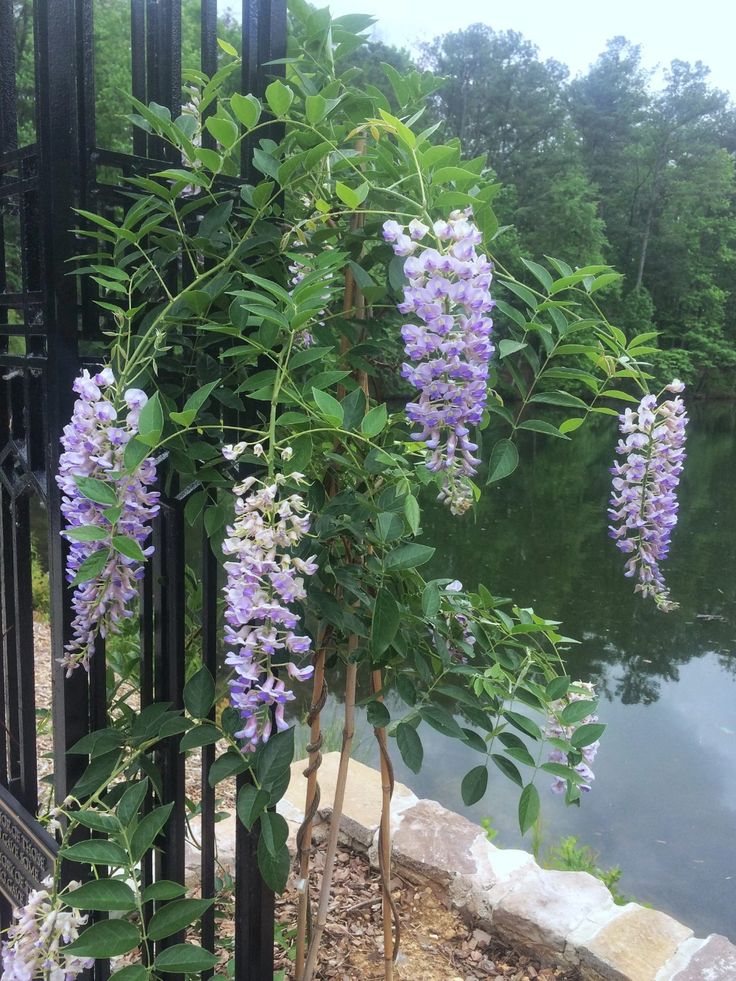
Learn more
